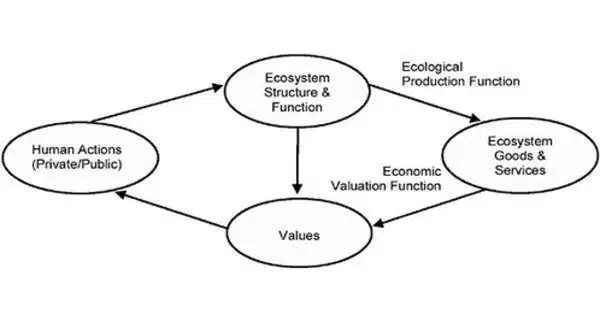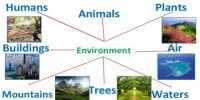Ecosystem valuation is an economic process that assigns a monetary, biophysical, or other value to an ecosystem and/or the ecosystem services provided by the ecosystem. It is the process of determining the monetary worth of ecosystems and the benefits they deliver to society. Ecosystems are natural habitats that include everything from forests and wetlands to seas and grasslands, and they play an important role in supporting life on Earth.
Such monetization ideally provides a tool for policymakers and conservationists to evaluate management impacts and compare a cost-benefit analysis of potential policies by quantifying, for example, the human welfare benefits of a forest to reduce flooding and erosion while sequestering carbon, providing habitat for endangered species, and absorbing harmful chemicals.
Ecosystem services are the benefits that people obtain from ecosystems, and they can be grouped into four broad categories:
- Provisioning Services: These are the tangible products that ecosystems provide, such as food, water, timber, and medicinal plants. For example, forests provide timber, while oceans offer seafood.
- Regulating Services: These services involve the control of natural processes, including climate regulation, pollination, and water purification. Wetlands, for instance, can help purify water by filtering out pollutants.
- Supporting Services: These services are essential for the production of all other ecosystem services. Examples include nutrient cycling, soil formation, and habitat provision. Healthy soils, for instance, support agriculture and plant growth.
- Cultural Services: These are non-material benefits that people derive from ecosystems, including recreational opportunities, aesthetic enjoyment, and cultural and spiritual significance. National parks and scenic landscapes are examples.
There are several methods for valuing ecosystems and their services, including:
- Market-Based Methods: These methods estimate the value of ecosystem services based on market prices. For example, the market value of timber can be used to estimate the economic value of a forest.
- Non-Market-Based Methods: These methods estimate the value of ecosystem services that do not have a market price. Contingent valuation surveys and choice experiments are examples where people are asked how much they would be willing to pay for a particular ecosystem service.
- Benefit Transfer: This method involves transferring the results of economic valuation studies from one location to another with similar ecosystems and services.
- Integrated Assessment Models: These models use complex data and models to estimate the economic value of multiple ecosystem services and their interactions.
Despite these obstacles, ecosystem valuation remains an important tool for increasing public awareness of the importance of ecosystems, directing policy decisions, and promoting sustainable resource management. It is part of a larger effort to integrate ecological and economic factors in order to preserve the long-term health and well-being of natural ecosystems as well as human society. Such valuations, however, are estimates that contain the inherent quantitative uncertainty and philosophical argument of evaluating a range of non-market costs and benefits.
















